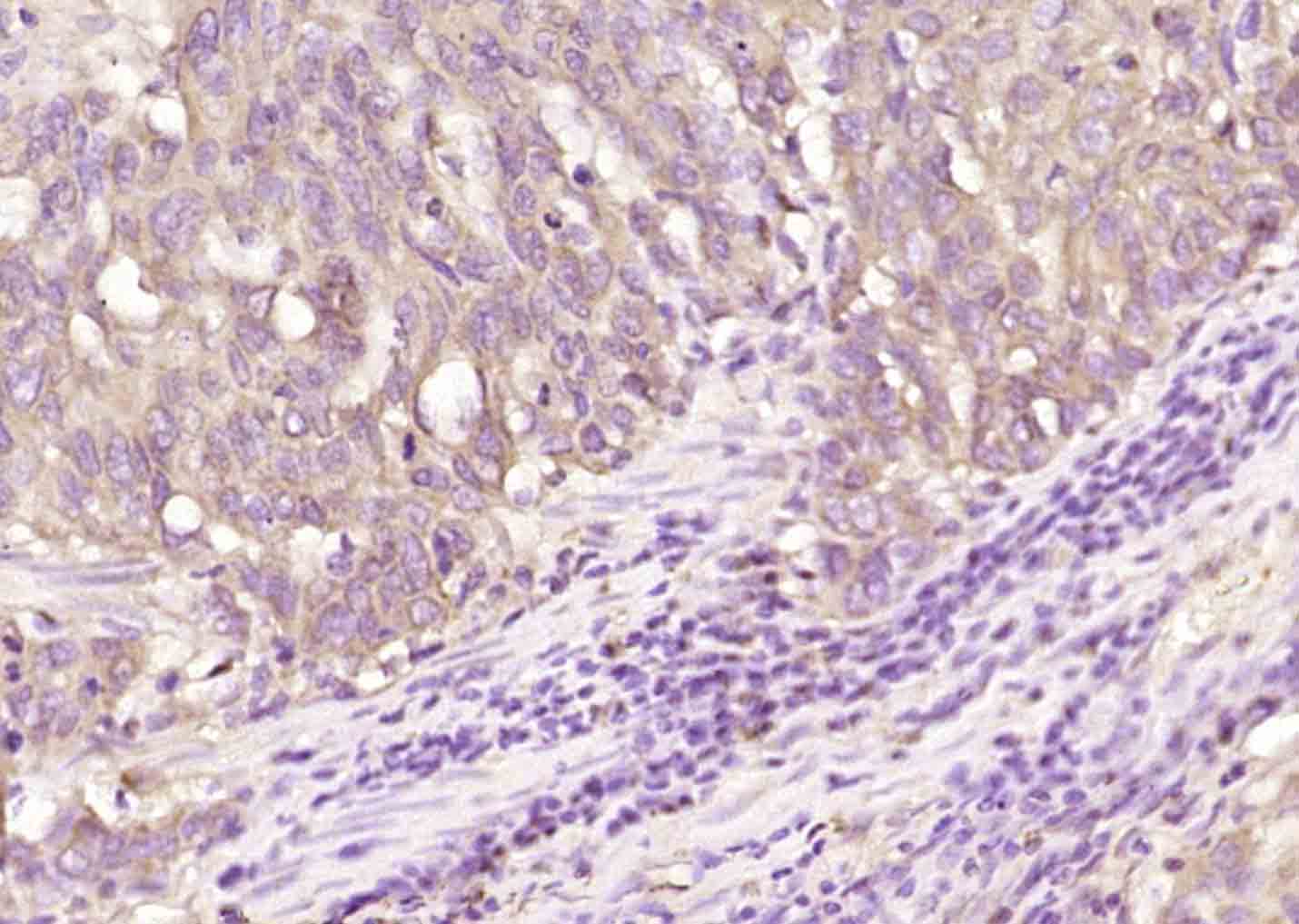
Rabbit Anti-TENM3 antibody
TEN3_HUMAN; Teneurin-3; Ten-3; Protein Odd Oz/ten-m homolog 3; Tenascin-M3; Ten-m3; Teneurin transmembrane protein 3; KIAA1455; ODZ3; TNM3;
View History [Clear]
Details
Product Name TENM3 Chinese Name 固生蛋白3抗体 Alias TEN3_HUMAN; Teneurin-3; Ten-3; Protein Odd Oz/ten-m homolog 3; Tenascin-M3; Ten-m3; Teneurin transmembrane protein 3; KIAA1455; ODZ3; TNM3; literatures Research Area Tumour Cell biology immunology Neurobiology Signal transduction Immunogen Species Rabbit Clonality Polyclonal React Species Human, (predicted: Mouse, Rat, Chicken, Dog, Pig, Cow, Horse, Sheep, ) Applications ELISA=1:5000-10000 IHC-P=1:100-500 IHC-F=1:100-500 ICC=1:100-500 IF=1:50-200 (Paraffin sections need antigen repair)
not yet tested in other applications.
optimal dilutions/concentrations should be determined by the end user.Theoretical molecular weight 301kDa Cellular localization The cell membrane Form Liquid Concentration 1mg/ml immunogen KLH conjugated synthetic peptide derived from human TENM3: 1721-1850/2699 <Extracellular> Lsotype IgG Purification affinity purified by Protein A Buffer Solution 0.01M TBS(pH7.4) with 1% BSA, 0.03% Proclin300 and 50% Glycerol. Storage Shipped at 4℃. Store at -20 °C for one year. Avoid repeated freeze/thaw cycles. Attention This product as supplied is intended for research use only, not for use in human, therapeutic or diagnostic applications. PubMed PubMed Product Detail This gene encodes a member of the teneurin transmembrane protein family. The encoded protein may be involved in the regulation of neuronal development including development of the visual pathway. Mutations in this gene have been associated with microphthalmia and developmental dysplasia of the hip. [provided by RefSeq, Jan 2023]
Function:
Involved in neural development, regulating the establishment of proper connectivity within the nervous system. Promotes axon guidance and homophilic cell adhesion. Plays a role in the development of the visual pathway; regulates the formation in ipsilateral retinal mapping to both the dorsal lateral geniculate nucleus (dLGN) and the superior colliculus (SC). May be involved in the differentiation of the fibroblast-like cells in the superficial layer of mandibular condylar cartilage into chondrocytes. May function as a cellular signal transducer (By similarity).
Subunit:
Homodimer; disulfide-linked (Probable).
Subcellular Location:
Membrane; Single-pass type II membrane protein.Cell projection, axon (By similarity).
Tissue Specificity:
Expressed in adult and fetal brain, slightly lower levels in testis and ovary, and intermediate levels in all other peripheral tissues examined. Not expressed in spleen or liver. Expression was high in brain, with highest levels in amygdala and caudate nucleus, followed by thalamus and subthalamic nucleus.
DISEASE:
Note=Defects in TENM3 are a cause of microphthalmia, isolated, with coloboma (MCOPCB). Microphthalmia is a disorder of eye formation, ranging from small size of a single eye to complete bilateral absence of ocular tissues. Ocular abnormalities like opacities of the cornea and lens, scaring of the retina and choroid, cataract and other abnormalities like cataract may also be present. Ocular colobomas are a set of malformations resulting from abnormal morphogenesis of the optic cup and stalk, and the fusion of the fetal fissure (optic fissure). [SIMILARITY] Belongs to the tenascin family. Teneurin subfamily.
Similarity:
Contains 8 EGF-like domains.
Contains 5 NHL repeats.
Contains 1 teneurin N-terminal domain.
Contains 23 YD repeats.
SWISS:
Q9P273
Gene ID:
55714
Database links:Entrez Gene: 55714 Human
Entrez Gene: 23965 Mouse
Omim: 610083 Human
SwissProt: Q9P273 Human
SwissProt: Q9WTS6 Mouse
Product Picture
References (0)
No References
Bought notes(bought amounts latest0)
No one bought this product
User Comment(Total0User Comment Num)
- No comment



 +86 571 56623320
+86 571 56623320
 +86 18668110335
+86 18668110335

